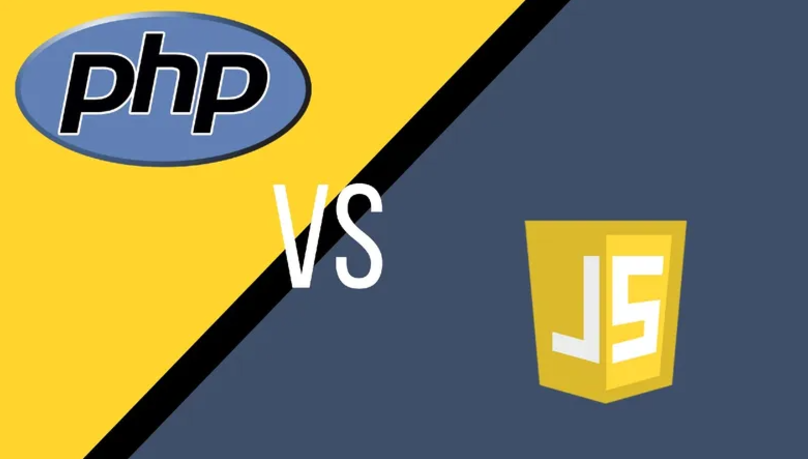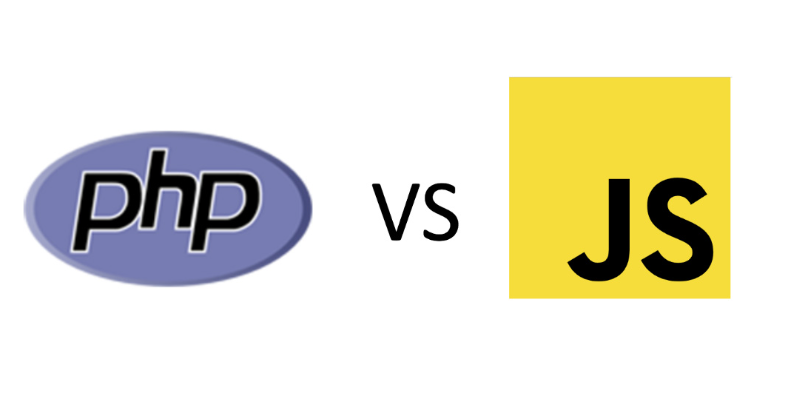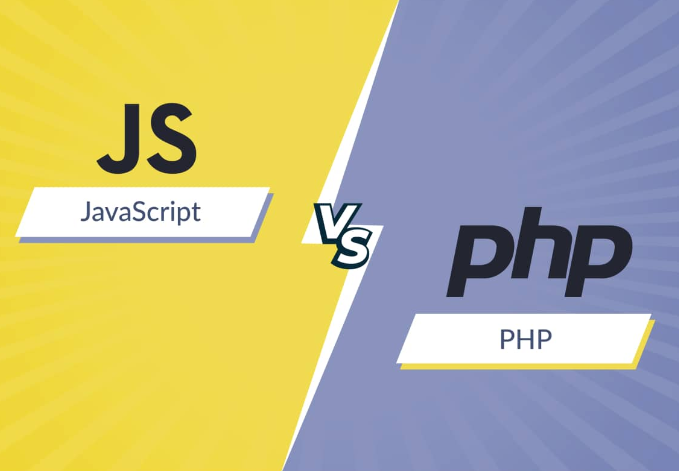Introduction to PHP and JavaScript
Choosing the correct programming language is vital when developing a website for any project. PHP and JavaScript are two popular languages in website development that can be effectively used in different areas of development because they address entirely different issues. PHP was formerly applied for server-side scripting to develop dynamic websites. It helps construct the server-side logic. JavaScript is more suitable for client-side scripting, enabling developers to produce classy and dynamic user interfaces.
For these reasons, PHP’s best-selling point is its capability to connect with databases and supply pre-processed web pages safely and efficiently. JavaScript enables developers to give users these rich experiences directly via the browser, sparing them frequent interaction with web servers and the ability to update page content. Node.js puts JavaScript into the server side, making full-stack development possible within a single language.
If you know what PHP and JavaScript can do, you can decide, according to your project’s platform and requirements, which one is best suited for the job within the framework in which you want to build your website.
Essential Characteristics of PHP
PHP stands out for its ability to integrate seamlessly with databases, particularly MySQL. This makes it ideal for designing and creating data-oriented websites. PHP is also secure since the server executes the code and does not reach the client’s browser, making its performance efficient. It also supports HTML, and developers can write PHP code within the HTML document, thereby making development very convenient.
In addition, PHP has many embedded functions and more genuine space like Laravel and Symfony, which can reduce huge development work. Because of this, you will find it highly portable and can deliver great results should you implement it for several web development needs, particularly those that call for strong backend exercises.
Fundamental Aspects of JavaScript
JavaScript is renowned for enhancing web pages with interactive elements and dynamic content. It converts simple static web pages into comprehensive user experiences by allowing features like form validation, interactive maps, and animated graphics to be displayed right in the browser. With the development of Node.js, JavaScript has extended its functionality beyond the browser, enabling developers to write server-side code using the same language. This has created a path whereby the end-to-end development process can be accomplished using JavaScript only.
JavaScript is further strengthened by a good library and framework supporting the web, like React, Angular, and Vue.js, which makes it easy to develop high-end web applications. Its language structure is non-blocking, which makes it efficient in applications such as live talk, games, and other cooperation tools. Also, JavaScript has features that enable asynchronous work: promises and async/await.
Web developers use JavaScript because it is flexible and does not require complex integration of other technologies. JavaScript can be easily integrated into projects, so newly added options do not have to change the project from scratch. JavaScript is already under steady improvement and thus is already on the path of becoming even more popular. It remains an important aspect of Web Development as it encourages growth and offers sound practice solutions to various industries.
Performance and Scalability Comparison
PHP and JavaScript each offer distinct advantages in performance and scalability. JavaScript’s non-blocking call model and event-driven nature perfectly suit applications where multiple operations, such as live chat applications and online gaming, can be performed simultaneously. This structure also reduces time and makes for seamless, smooth interactions with the software, especially when performing multiple tasks simultaneously.
PHP, on the other hand, follows a synchronous execution model, which can sometimes result in slower performance compared to JavaScript in specific use cases. However, PHP compensates with its robust ability to manage complex server-side operations and seamless database integrations. Since PHP has evolved over the years to the relatively mature state it is in today, many PHP frameworks, such as Laravel and Symfony, make it easy to scale up the language and appropriately manage large applications and traffic.
Whereas JavaScript, especially with Node.js, is mighty in such scenarios requiring immediate, asynchronously returned answers, PHP remains one of the most formidable contenders for projects needing robust backend solutions and a proper handle on data integrity.
Both languages have evolved to support scalable solutions: JavaScript through its event-driven model and PHP through its extensive framework support and backend capabilities. When choosing between the two, consider your project’s specific performance requirements and scalability needs to effectively leverage each language’s strengths.
Developer Community and Support
PHP and JavaScript are scripting languages with a large and active community of developers that produce countless tutorials and libraries. PHP has been present in web development for quite a long time now, which means that developers have been able to develop frameworks and/or modules that can help simplify some of the complications. Among these, the Laravel and Symfony frameworks are the most widespread: both provide solid solutions for backend development and ensure that the developers have proper resources that are well-documented and trustworthy.
By having a long streak of fruitful uses for Web development and servers, as represented by Node.js, JavaScript is fueled by a very active and creative community. This community always propagates change in frameworks and libraries such as React, Angular, and Vue.js that help develop interactive and high-performing applications. Thirdly, it is essential to consider that the sphere of JavaScript is characterized by relatively high velocities for introducing new technologies and improving the work developers need.
Many tutorials, forums, and courses are available for each of these programming languages, which will be helpful for developers working at the primary and advanced levels. It also refers to those that exist as web-based platforms where developers seek help through forums such as Stack Overflow, build repositories that host projects on GitHub, or enroll in coding boot camps.
This community arrangement means that both young and experienced developers can learn and stay updated on the new trends in web development. PHP and JavaScript have strong backing from the community, meaning a developer can easily find a fix if they stumble across an issue.
Applications and Recommended Practices
PHP is to server-side web development what an assembler is to the automotive industry; it forms the foundation for most content management systems, including WordPress, Joomla, and Drupal. Based on this premise, PHP is advisable for applications that resolve complex data and backend problems complemented by good database integration. Laravel and Symfony are PHP frameworks that can reduce the time taken to complete work while developing expansive programs.
Front-end development cannot be complete without JavaScript, which is commonly used for designing interesting and engaging interfaces. Frameworks and libraries, including React, Angular, and Vue javascript, offer quality solutions for developing present-day single-page applications, which provide user-friendly interfaces. Today, with Node.js, there is a possibility of using Javascript to create server-side applications such as instant messaging communication and online gaming.
PHP can handle server-side logic and database management when integrating both languages, while JavaScript can manage client-side interactions and real-time updates. This approach efficiently uses both languages to provide an all-around solution to full-stack development.
Implementing best practices, such as using identified frameworks, coding standards, documentation, etc., will greatly increase the usability and sustainability of your project. The paper also showed a dichotomy between PHP and JavaScript, two extensively developed languages that help developers build user-friendly and responsive web apps.
Factors to Consider for Your Project
Choosing between PHP and JavaScript hinges on several factors unique to your project. Evaluate whether your application demands robust backend operations, which PHP handles exceptionally well, or if it requires extensive client-side interactivity, where JavaScript shines. Assess your team’s proficiency with each language; leveraging existing skills can streamline development and reduce learning curves.
Consider the application’s complexity and the importance of scalability and security. Projects with frequent real-time updates benefit more from JavaScript’s non-blocking architecture, while data-driven sites lean towards PHP for its seamless database integration. Additionally, consider the long-term maintenance and potential for future updates, as each language offers distinct ecosystems and community support that can aid in ongoing development.
Summary and Advice
Both PHP and JavaScript offer powerful features tailored to different aspects of web development. PHP is best suited for server-side and data-intensive websites, while JavaScript is best suited for backend operations and database interaction. JavaScript can be a little of everything because it excels in UI design and can serve as a backend through Node.js.
However, depending on your work type, you should choose one of the two instruments. Overall, PHP is good for applications that need complicated backend functions and for dealing with secure data. It has all the necessary tools to construct solutions that are both scalable and easy to maintain—the ecosystem is relatively mature, including frameworks like Laravel and Symfony.
On the other hand, if your project focuses on delivering dynamic, real-time user experiences, JavaScript’s non-blocking, event-driven architecture offers a significant advantage.
Your team’s expertise is another critical factor. Essentially, there is a great advantage when it is possible to align the skills of a development team with those that will be needed to fulfill the undertaking at hand so that there is not as steep of a learning curve as there could be. Furthermore, consider how all of this will look in the long-term context and whether all of this can be scaled. Both languages have large and robust audiences and many resources, so help and advice can be provided.
The combination of both languages can also be advantageous. It covers a full stack when PHP scripts are utilized for server-side processing and database environments and combined with JavaScript for client-side web processing. All these favor the use of the given approach since one can maximize the strengths of each language.
Finally, think about your specific task. The right actions are necessary to achieve the maximum outcome. Based on that, it is really feasible to select the proper choice that would positively impact a web application’s performance, stability, and interactive features.




